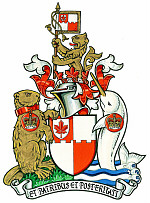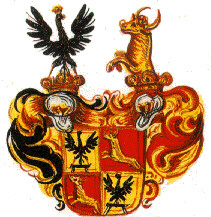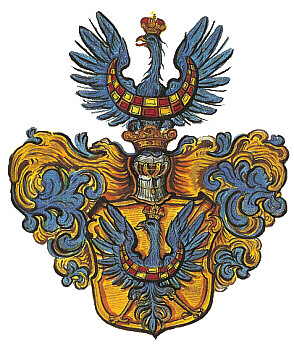
 |
| The Royal Heraldry Society of Canada's armorial bearings |

Welcome to the Slovenija Branch or the SB. The Branch is composed of individuals who are professionals and non-professionals, academicians, historians and genealogists,
 |
| The official badge for the Slovenija Branch |
Heraldry has experienced a resurgence in popularity in many countries, including the Commonwealth nations such as Australia, Canada, England, Scotland, as well as European nations such as Austria, Czech Republic, France, Germany, Hungary, Poland, Portugal, Spain and Sweden, and to add,
 |
| Janez Vajkard Valvasor's armorial bearings |
 |
| Carniola/Kranjske's armorial bearings |
There are, in general, two approaches in practice today with respect to the possession of armorial bearings, and the transference of armorial bearings from generation to generation. One approach under the English Laws of Arms, nations which following the British tradition, armorial bearings do not belong to all persons of a given surname and may only be rightfully be borne by direct decendants of the individual to whom the original armorial bearings were first granted. Other males within the family line could inherit the paternal arms, however, the arms are differenced in some way according to the country's rules of cadency. In Canada, this has been extended to include daughters with the caveat that they retain the original family surname. However, enforcement of such rules is at best cursory.
The second approach exists as a result of heraldic practices originating in the former "Holy Roman Empire". In Germany in particular, between 1350 and 1600, only 18 achievements of arms were granted by the Emperor. Most arms were and are self-styled, and the proclamation of the Emperor in the early Medieval period, stated that everyone will use arms as they wish. As a result of this proclamation, and the splitting up of the Holy Roman Empire into thousands of independent kingdoms in the 19th century, there are now millions of armorial bearings in use by families, and no centralized authority for the granting and registration of arms. The armorial bearings represented a family line, and not an individual. However, when a family line branches out, that branch of the family may change the armorial bearing slightly through a change in its tincture, add a charge or change the crest.